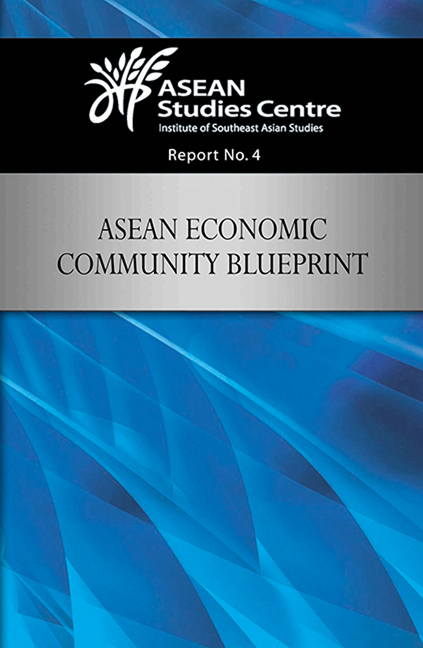Book contents
- Frontmatter
- Contents
- Introduction
- I ASEAN Roundtable 2008: ASEAN Economic Community Blueprint
- II Background Papers
- 1 Tackling Non-Tariff Barriers in ASEAN
- 2 Regional Framework for Competition Policy and AEC
- 3 Achieving an Integrated ASEAN Economic Community: The Role of Infrastructure Development?
- 4 How Less Developed Economies in Southeast Asia Can Participate in Production Networks: Industrial Policy in the WTO and FTA Era
- Annex I Programme of the ASEAN Roundtable 2008
- Annex II List of Participants
- Annex III List of NTBs Affecting the ASEAN Priority Sectors for Integration
1 - Tackling Non-Tariff Barriers in ASEAN
from II - Background Papers
Published online by Cambridge University Press: 21 October 2015
- Frontmatter
- Contents
- Introduction
- I ASEAN Roundtable 2008: ASEAN Economic Community Blueprint
- II Background Papers
- 1 Tackling Non-Tariff Barriers in ASEAN
- 2 Regional Framework for Competition Policy and AEC
- 3 Achieving an Integrated ASEAN Economic Community: The Role of Infrastructure Development?
- 4 How Less Developed Economies in Southeast Asia Can Participate in Production Networks: Industrial Policy in the WTO and FTA Era
- Annex I Programme of the ASEAN Roundtable 2008
- Annex II List of Participants
- Annex III List of NTBs Affecting the ASEAN Priority Sectors for Integration
Summary
Introduction
The commitment to reduce barriers to intra-regional trade has always been an integral element to the goal of achieving economic integration in the ASEAN region. It dates back to 1977 under the Preferential Trade Agreement (PTA). In 1992, a more definite target for trade liberalization was laid down under the ASEAN Free Trade Area (AFTA). The target date was set at 2003. Over the years, however, the ASEAN took serious steps to deepen economic integration. During the ASEAN Summit in 2003, the ASEAN leaders resolved to establish an ASEAN Economic Community (AEC) by 2020. The time-line was later accelerated to 2015 during the ASEAN Summit in January 2007.
The AEC is characterized as a single market and production base, with free flow of goods, services, investment, capital, and skilled labour. As an initial step towards the goal, the ASEAN leaders signed the Framework Agreement for the Integration of Priority Sectors during the ASEAN Summit in 2004. The framework agreement outlined the steps to be taken to accelerate the integration of eight priority goods sectors and three services sector. During the ASEAN Summit in November 2007, the ASEAN Leaders signed the Declaration on the AEC Blueprint, the master plan that guides the ASEAN towards achieving an AEC by 2015.
Soesastro (2008) made clear what AEC means when he said, “the idea of a single market and production base is essentially about providing consumers in the region with an expanded market from which they can fulfill their consumption needs and producers in the region with an expanded space in which they can undertake their production activities without having to worry about national (administrative) boundaries within the region”. This calls for the free flow of goods among the ASEAN members, which in turn requires the elimination of both border and across-the-border policies and regulations in the region. This means zero tariffs and elimination of NTBs; and once across a border, the good should be accorded the same treatment as any other domestic good.
ASEAN has achieved significant progress in tariff liberalization, with the average tariff rate now at less than 5 per cent. However, this achievement has been countered by non-tariff barriers (NTBs) that are persistent and on the rise, and for some, in even more complex forms.
- Type
- Chapter
- Information
- ASEAN Economic Community Blueprint , pp. 15 - 29Publisher: ISEAS–Yusof Ishak InstitutePrint publication year: 2009



